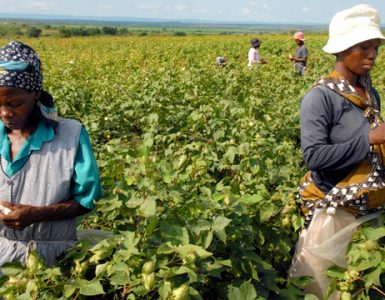Despite these challenges, the IMF expects global growth to increase from 3.1% in 2016 to 3.4% in 2017. Growth in emerging market and developing economies, growth is forecast to increase from 4.1% in 2016 to 4.5% in 2017. For advanced economies is expected to rise from 1.6% in 2016 to 1.9% in 2017. For Sub-Saharan Africa, growth is estimated to rise from 1.6% in 2016 to a significant 2.8% in 2017. From these statistics, it is clear that a positive global economic outlook for 2017 is expected. We cannot ignore the uncertainties, however, posed by the Trump administration and its potential global impact.
The SADC region experienced negative growth rates in 2015 and 2016. According to the Batswana Finance Minister, Kenneth Matambo, the region is expected to record a lower average real GDP growth rate of 3.1% in 2016, compared to 3.5% in 2015. The negative growth rates can be attributed to the recent El-Nino drought which severely hit the region. During 2016, P445 million (approx. USD 145 million) was put aside by the government of Botswana for the sole purpose of implementing drought relief measures, including the support of the Agricultural Credit Guarantee Scheme. The government also received a USD 145.5 million loan from the World Bank for the Emergency Water Security and Efficiency Project in order to address the effects of the drought2.
The region has also experienced a sharp rise in inflationary pressures since January 2016, largely attributed to the drought and subsequent food shortages, as well as the appreciation of the USA dollar against many of the currencies in the region. On average, inflation increased from 7% in September 2015 to a significant 12% in September 2016. Increases in inflation lead to price instability and negatively affect the pocket of the average citizen.
Recent data by Statistics Botswana revealed that domestic economic growth declined from 4.1% in 2014 to 1.7% in 2015. This significant decline is attributed to the weak performance of the mining sector, in which the production of diamonds decreased by 15.6% and copper by 35%. Disruptions in water and electricity also led to a significant decline in the growth of non-mining sectors from 4.9% in 2014 to 1.7% in 2015.
While foreign direct investment (FDI) in Botswana declined from by 1% in 2015, FDI in the SADC region grew significantly, from USD 11.0 billion to almost USD 18.0 billion, approximately 63.3%. Botswana’s FDI inflows were recorded at USD 1.43 billion in 2013, rising gradually to USD 1.77 billion in 2015. This represents a 23.8% increase, comparatively less than the 63.3% increase in the SADC region, which suggests the region’s current and future investment potential and ability stimulate economic growth3.
Price stability is one of the most crucial factors required to achieve macroeconomic stability in a country. Domestic inflation declined slightly to 3.0% in December 2016, from 3.1% in December 2015, in line with the Bank of Botswana’s target band of 3-6% and well below the regional average.
The primary objective of the management of the pula exchange rate mechanism is to maintain a stable real effective exchange rate by regularly adjusting the basket weights in line with the trade patterns of the country and the rate of crawl that is based on the inflation differential between Botswana and its trading partners.
Botswana’s fiscal position shifted to a deficit after being in surplus for three consecutive years. The fiscal balance changed from a surplus 3.7% of GDP in FY2014/15 to a deficit of about 4.5% of GDP in FY2015/16, due to lower than expected revenue. One of the priority areas of the National Development Plan (NDP) is the development of diversified sources of economic growth and revenue. Botswana’s economy is characterized by its dependency on two volatile revenue sources: mineral revenues and SACU revenues. The adoption of the Economic Stimulus Program has led to an increase in expenditure equal to 2.2% of GDP. Consequently, there is a need to diversify the exports, which have typically been dominated by diamonds, and secure more sustainable and reliable sources of revenue.
Nonetheless, a positive outlook can be expected for Botswana thanks to forecasts of slight improvements in the mining sector, the non-mining sectors, and the level of relatively rapid growth expected for the SADC region. From the budget speech, inflation is expected to remain stable due to low domestic demand pressures and stability in global oil prices. Downside risks to growth prospects remain however, such as the subdued global economy and low commodity prices. The Trump victory has also created some uncertainty in terms of global economic growth, and is still a matter of “wait and see” for the SADC region, which is highly dependent on the global economy. If the recent drought intensifies in the region, Botswana’s economic growth will be adversely affected.
1 Batswana Ministry of Finance and Economic Development
2 International Bank of Reconstruction and Development
3 United Nations Conference on Trade and Development





























